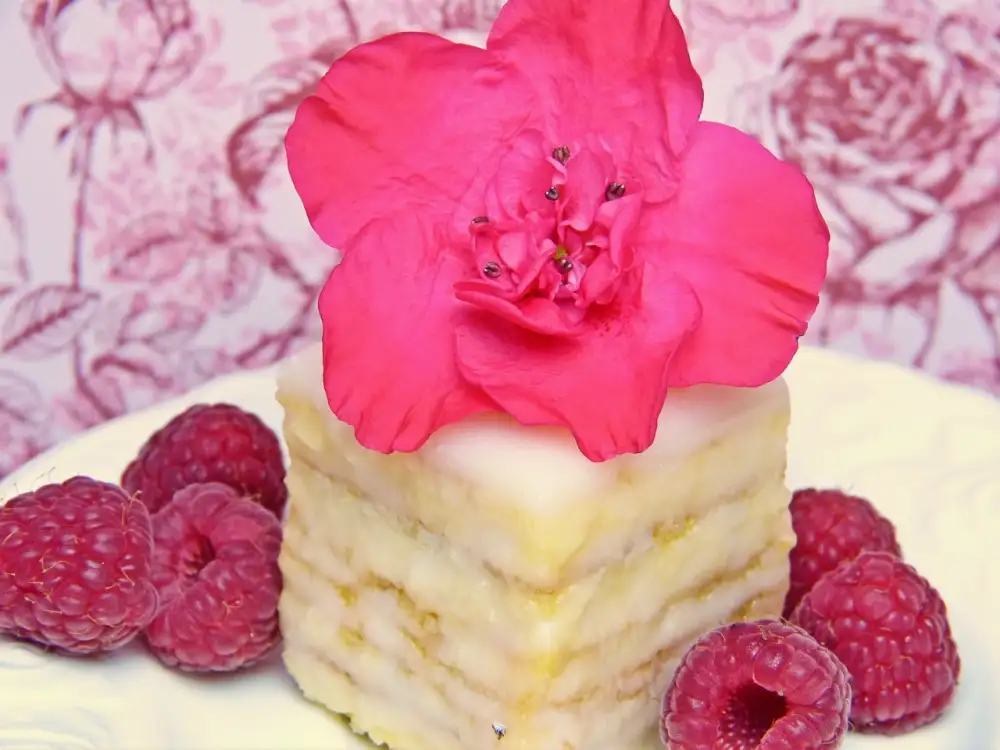Deliciously Gluten-Free Biscuits: Indulge in a Tasty and Healthy Treat!

- Understanding gluten and its effects on health
- Exploring the benefits of gluten-free diet
- Ingredients commonly used in gluten-free biscuit recipes
- Step-by-step guide to making gluten-free biscuits
- Tips for achieving the perfect texture and flavor
- Creative variations and add-ins for gluten-free biscuits
- Serving suggestions and pairing options
- Frequently asked questions about gluten-free biscuits
Gluten-free biscuits are a delicious and healthy alternative to traditional biscuits. Whether you have celiac disease, gluten intolerance, or simply want to explore new flavors, these treats are sure to satisfy your cravings. Made with alternative flours and ingredients, gluten-free biscuits offer a wide range of textures and flavors that will leave you wanting more. In this article, we will dive into the world of gluten-free baking and share tips on how to make the perfect batch of these delectable treats. Get ready to indulge in a tasty and healthy treat!
Understanding gluten and its effects on health
Gluten is a protein found in wheat, barley, and rye. For those with celiac disease or gluten sensitivity, consuming gluten can lead to digestive issues, nutrient deficiencies, and even damage to the small intestine. It is important to understand the effects of gluten on health and make necessary dietary adjustments. By opting for gluten-free biscuits, individuals can enjoy a delicious treat without compromising their well-being.
Exploring the benefits of gluten-free diet
Exploring the Benefits of Gluten-Free Diet
A gluten-free diet has gained popularity in recent years, and for good reason. For individuals with celiac disease or gluten sensitivity, eliminating gluten from their diet is essential for maintaining optimal health. But even for those without these conditions, there are several benefits to adopting a gluten-free lifestyle.
Firstly, a gluten-free diet can improve digestive health. Gluten, a protein found in wheat, barley, and rye, can be difficult to digest for some people. By removing gluten from your diet, you may experience reduced bloating, gas, and discomfort.
Secondly, going gluten-free can lead to increased energy levels. Many individuals report feeling less sluggish and more energized after eliminating gluten from their meals. This could be attributed to improved nutrient absorption and reduced inflammation in the body.
Additionally, a gluten-free diet can promote weight loss and weight management. Gluten-containing foods often tend to be high in calories and low in nutrients. By cutting out these processed foods and focusing on whole grains like quinoa or brown rice instead, you can maintain a healthier weight.
Furthermore, a gluten-free lifestyle may improve skin health. Some studies have shown that individuals with certain skin conditions like eczema or psoriasis experience relief when they eliminate gluten from their diets.
Lastly, embracing a gluten-free diet encourages exploration of new ingredients and flavors. It opens up a world of alternative flours such as almond flour or chickpea flour that can add unique tastes and textures to your baked goods.
In conclusion, while a gluten-free diet is necessary for those with specific medical conditions, it also offers numerous benefits for everyone else. From improved digestion to increased energy levels and the opportunity to experiment with new ingredients – going gluten-free can be both delicious and beneficial for overall well-being.
Ingredients commonly used in gluten-free biscuit recipes
When it comes to making gluten-free biscuits, there are a variety of ingredients that can be used as substitutes for traditional wheat flour. Some commonly used options include almond flour, coconut flour, rice flour, and tapioca flour. These alternative flours not only provide a gluten-free base for the biscuits but also add unique flavors and textures. Other ingredients often found in gluten-free biscuit recipes include baking powder or soda, salt, butter or oil, eggs or egg replacers, and a liquid such as milk or dairy-free alternatives. Experimenting with different combinations of these ingredients can help achieve the perfect balance of taste and texture in your gluten-free biscuits.
Step-by-step guide to making gluten-free biscuits
1. Preheat your oven to the recommended temperature and line a baking sheet with parchment paper.
2. In a large mixing bowl, combine gluten-free flour blend, baking powder, salt, and any additional dry ingredients like herbs or spices.
3. Cut in cold butter or use a pastry cutter until the mixture resembles coarse crumbs.
4. In a separate bowl, whisk together eggs, milk (or dairy-free alternative), and any desired flavorings like vanilla extract or lemon zest.
5. Gradually add the wet ingredients to the dry mixture, stirring until just combined. Avoid overmixing to prevent tough biscuits.
6. If the dough seems too sticky, add a little more flour; if it's too dry, add a splash of milk.
7. Turn the dough out onto a lightly floured surface and gently knead it a few times until it comes together.
8. Roll out the dough to your desired thickness (usually around 1/2 inch) using a rolling pin dusted with flour or between two sheets of parchment paper.
9. Use a biscuit cutter or glass rim to cut out rounds of dough and place them on the prepared baking sheet, leaving some space between each biscuit.
10. Bake in the preheated oven for about 12-15 minutes or until golden brown and cooked through.
11. Remove from the oven and let cool slightly before serving warm.
Enjoy your homemade gluten-free biscuits!
Tips for achieving the perfect texture and flavor
To achieve the perfect texture and flavor in gluten-free biscuits, it's important to follow these tips:
Creative variations and add-ins for gluten-free biscuits
Creative Variations and Add-Ins for Gluten-Free Biscuits:
1. Chocolate Chip: Add a handful of dairy-free chocolate chips to the biscuit dough for a sweet and indulgent treat.
2. Herb and Cheese: Mix in a combination of dried herbs like rosemary, thyme, or oregano, along with grated dairy-free cheese for a savory twist.
3. Cinnamon Sugar: Sprinkle a mixture of cinnamon and sugar on top of the biscuits before baking for a delightful burst of flavor.
4. Berry Burst: Gently fold in fresh or frozen berries such as blueberries, raspberries, or strawberries to add bursts of fruity goodness to your biscuits.
5. Nutty Delight: Incorporate chopped nuts like almonds, walnuts, or pecans into the dough for added crunch and nutty flavor.
6. Zesty Lemon: Add some lemon zest to the dough for a refreshing citrusy taste that pairs perfectly with tea or coffee.
7. Pumpkin Spice: Blend in pumpkin puree and warm spices like cinnamon, nutmeg, and ginger to create deliciously spiced biscuits perfect for fall.
8. Coconut Dream: Mix in shredded coconut to give your biscuits a tropical twist and enhance their texture with its natural sweetness.
Get creative with these variations and experiment with different combinations to discover your own unique gluten-free biscuit flavors!
Serving suggestions and pairing options
When it comes to serving gluten-free biscuits, the options are endless. These delicious treats can be enjoyed on their own as a snack or paired with various accompaniments for a more satisfying meal. One classic option is to serve them with butter and jam, allowing the flavors to meld together in perfect harmony. For a savory twist, try topping your biscuits with creamy avocado or a dollop of hummus. They also make a great addition to any breakfast spread, served alongside eggs and bacon. If you're feeling adventurous, why not use them as the base for mini sliders or sandwiches? The light and fluffy texture of gluten-free biscuits provides the perfect canvas for your favorite fillings. Whether you're enjoying them at breakfast, lunch, or dinner, these biscuits are sure to impress with their delectable taste and versatility.
Frequently asked questions about gluten-free biscuits
1. Are gluten-free biscuits suitable for people with celiac disease?
Yes, gluten-free biscuits are safe for individuals with celiac disease as they do not contain any gluten, which can trigger adverse reactions in those with this condition.
2. Can I substitute regular flour with gluten-free flour in biscuit recipes?
Yes, you can easily replace regular flour with gluten-free flour in biscuit recipes. However, keep in mind that the texture and taste may differ slightly from traditional biscuits.
3. Where can I find gluten-free ingredients for making biscuits?
Gluten-free ingredients such as flours (rice, almond, coconut), xanthan gum, and tapioca starch are readily available in most grocery stores or specialty health food stores.
4. How do I store gluten-free biscuits to maintain freshness?
To keep your gluten-free biscuits fresh, store them in an airtight container at room temperature for up to 3-4 days. You can also freeze them for longer shelf life.
5. Can I make gluten-free biscuits without using eggs?
Yes, you can use egg substitutes like applesauce, mashed bananas, or flaxseed meal mixed with water to replace eggs in your gluten-free biscuit recipe.
6. Are there any specific techniques to ensure a light and fluffy texture in gluten-free biscuits?
To achieve a light and fluffy texture in your gluten-free biscuits, use a combination of leavening agents like baking powder and baking soda along with buttermilk or yogurt for moisture.
7. Can I add mix-ins like chocolate chips or dried fruits to my gluten-free biscuit dough?
Absolutely! Adding mix-ins like chocolate chips, dried fruits, nuts, or even herbs and spices can enhance the flavor profile of your gluten-free biscuits and make them more exciting.
Remember to experiment and have fun while making these delicious treats!
In conclusion, embracing the delicious world of gluten-free baking opens up a whole new realm of possibilities for those with dietary restrictions or simply looking to explore healthier options. Gluten-free biscuits can be just as tasty and satisfying as their traditional counterparts, while also providing numerous health benefits. By understanding the effects of gluten on our bodies and using alternative ingredients, we can create biscuits that are not only safe to consume but also incredibly delicious. So why not indulge in a tasty and healthy treat by trying your hand at making gluten-free biscuits? Your taste buds will thank you!
Published: 27. 11. 2023
Category: Food



